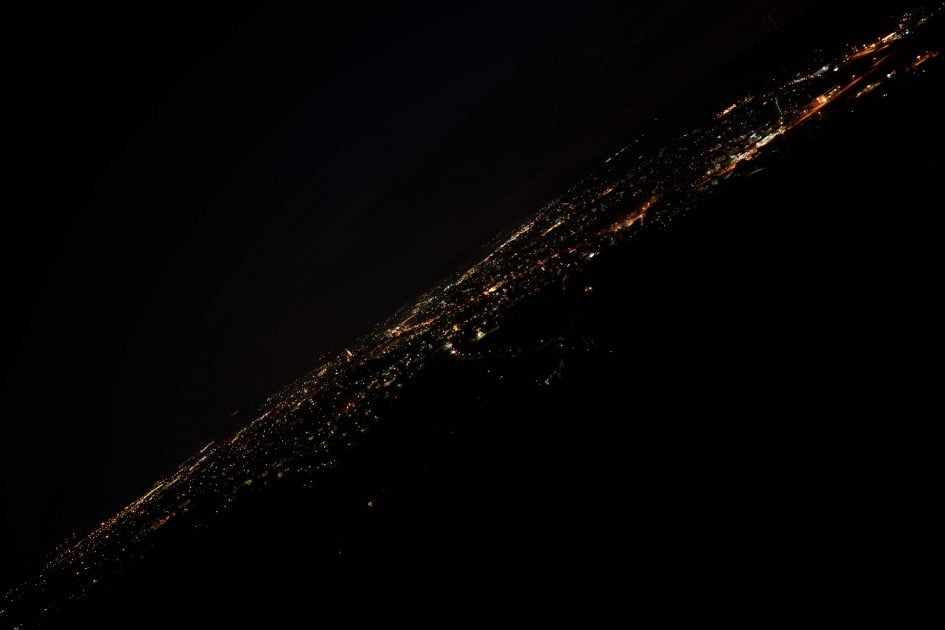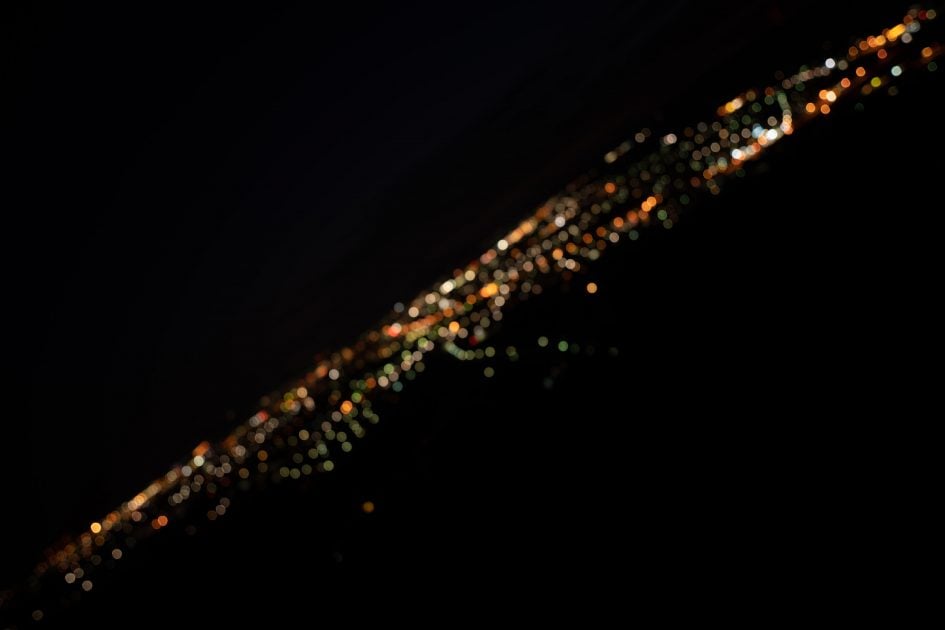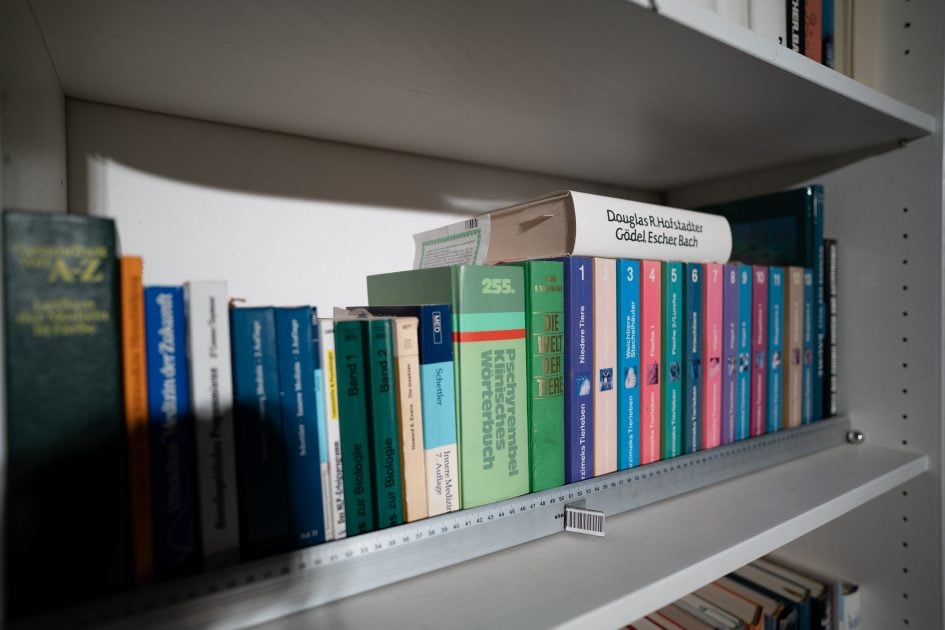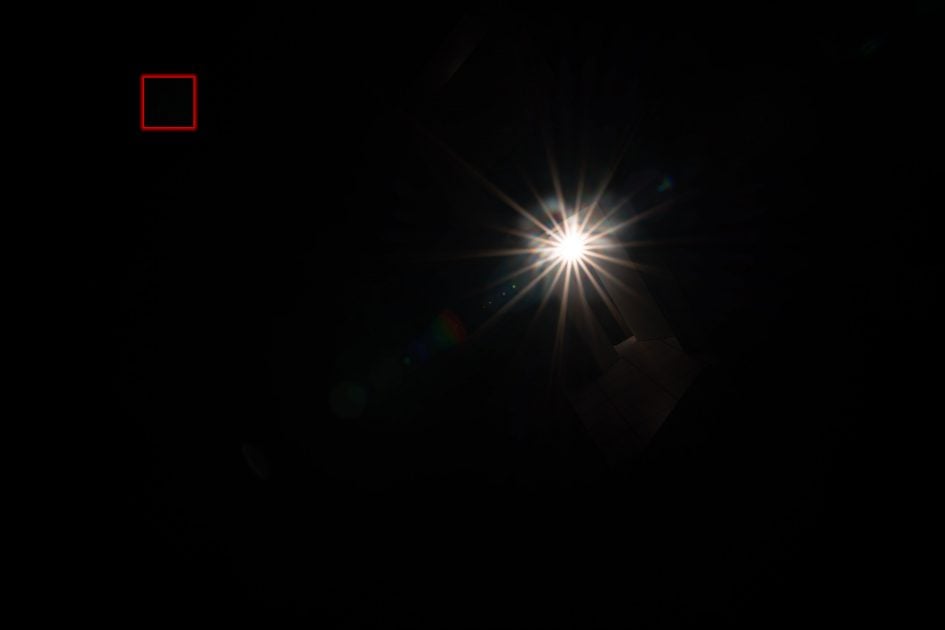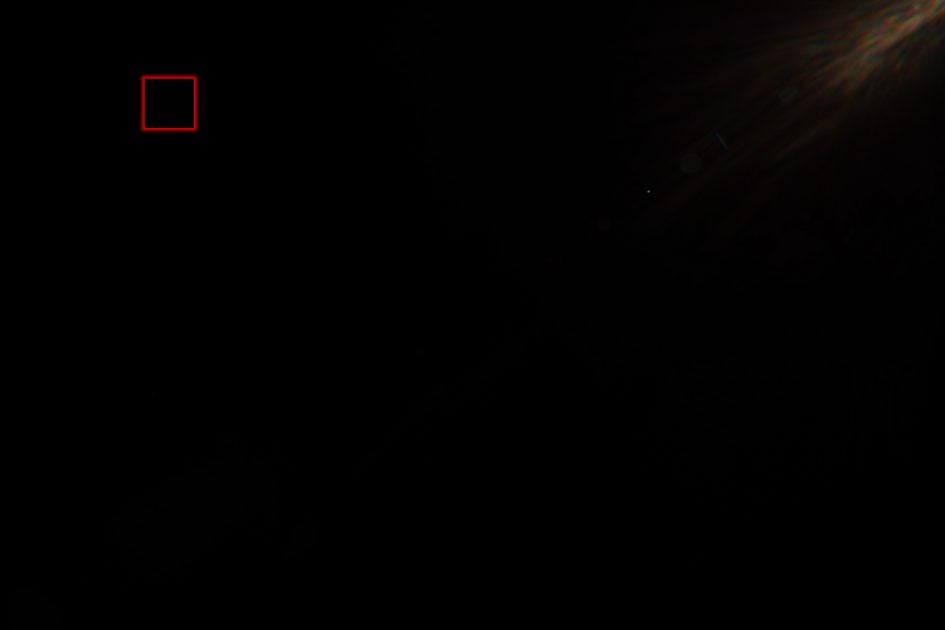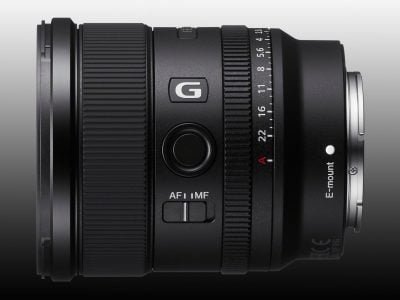Sony FE 20mm f1.8 G review
-
-
Written by Thomas
Quality
Testing: Longitudinal Chromatic Aberration and focus shift
Lenses with focal ratios of f2.8 or larger are often prone to longitudinal color aberrations (loCA, a.k.a. “axial color” or “bokeh CA”). These show up as magenta coloration in the foreground and greenish hues in the background and are not easily corrected in post-processing. The new Sony shows only negligible loCA at f1.8.
Sony FE 20mm f1.8 G Longitudinal Chromatic Aberration (loCA)
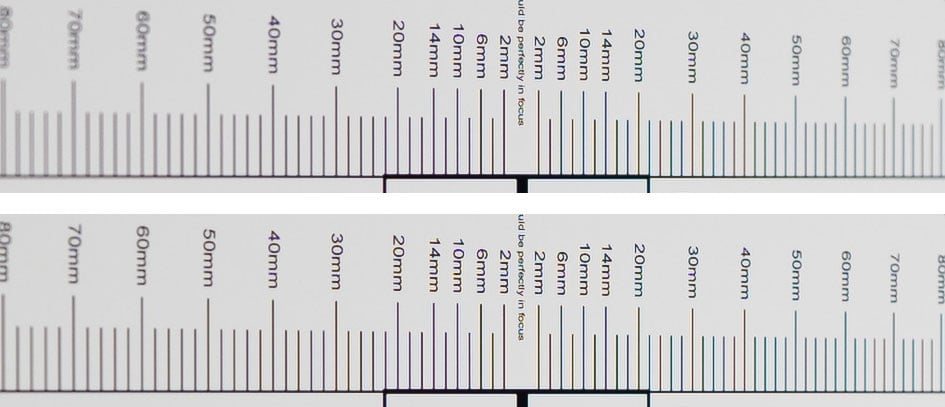
100% crops, f1.8 (top), f2.8 (bottom); left = foreground, right = background
The test also revealed that there is no focus shift to speak of at distances of 1m and farther away. The following real life shot shows that the Sony FE 20mm f1.8 G produces very little purple fringing around high-contrast edges or green outlining around background subjects. Very good!
Above: Sony FE 20mm f1.8 G at f1.8; 100% crop; click image to access 4k version
Sharpness and contrast
Let’s have a look at the theoretical performance of the new Sony FE 20mm f1.8 G first and compare it to the performance of the Tamron 20mm f2.8 M1:2 and two f1.4 alternatives from Sony and Sigma:
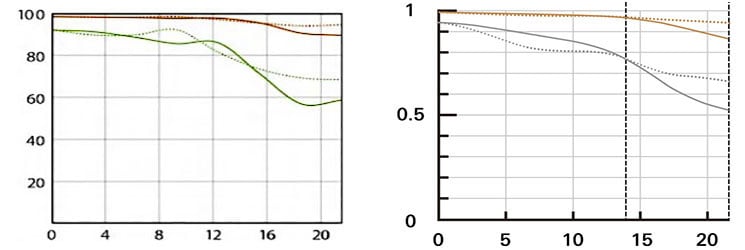
Above: MTF Sony FE 20mm f1.8 G (left) at f1.8, Tamron 20mm f2.8 M1:2 (right) at f2.8
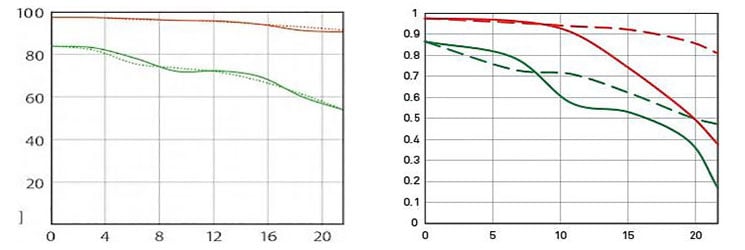
Above: MTF Sony FE 24mm f1.4 GM (left), Sigma 20mm f1.4 Art (right), both at f1.4
These MTF charts show the computed lens-performance wide open without influence of diffraction. Higher values are better (more contrast) and the closer the solid and dotted lines are together the less astigmatism (= resolution depends on the orientation of the test-pattern) the lens has. The x-axis displays the distance from the optical axis (=center of the sensor) in mm. I’ll show you the real-life performance at 4 mm (center), 13 mm (APS-C-corner), and 20 mm (FF-corner) on a 42MP Sony A7R II body.
From the charts the new Sony FE 20mm f1.8 G should produce a very contrasty image across the sensor with very sharp details within the APS-C image-circle but a clear roll-off outside it. The Tamron in comparison looks very similar but keep in mind that it is shown at f2.8 here, whereas the Sony is at f1.8. Stopping the Sony down to f2.8 should improve its performance well above the Tamron. Compared to the Sony FE 24mm f1.4 GM the new 20mm Sony should produce better detail in the APS-C image-circle with similar FF-corners. The Sigma Art shows the steepest drop towards the FF-corner and also suffers from a reduction of contrast in the outer areas.
Let’s see how this theoretical performance of Sony’s new lens translates into real life results in the sharpness test based on Siemens-stars. The following images were taken with the 42MP Sony A7R II camera with lens profile in camera set to Auto. The images are RAW files developed in Lightroom 9.2/CRAW 12.2 to Adobe Color profile, Noise Reduction=OFF, sharpening=50/0.5/36/10, with no extra tone, color, or saturation adjustment. White-balance was adjusted to a neutral white and I did some exposure compensation to make the brightness of all crops match. So you will not see light fall-off in the corners.
The following 100% crops show the Sony FE 20mm f1.8 G from f1.8 down to f11 compared to the Sigma 20mm f1.4 Art and the Sony FE 24mm f1.4 GM at f1.8 plus the Tamron 20mm f2.8 M1:2 at f2.8. The Sigma Art was shot on a 36MP Nikon D810. Processing is comparable and the 7% lower linear resolution of the 36MP sensor is just a little less challenging for the Sigma. Still, you can get a good impression on how it performs.
Sony FE 20mm f1.8 G; 100% crop from center, APS-C-corner, FF-corner

Above: Sony FE 20mm f1.8 G at f1.8

Above: Sony FE 24mm f1.4 GM at f1.7

Above: Sigma 20mm f1.4 Art on a 36MP Nikon D810 at f1.8
Comparing the results above has the 20mm Sony coming out on top followed by the 24mm Sony which shows a little magenta fringing in the center from loCA and slightly softer corners. The Sigma is less contrasty in the corners than both Sony lenses although it shows quite some detail.

Above: Sony FE 20mm f1.8 G at f2.0

Above: Sony FE 20mm f1.8 G at f2.8

Above: Tamron 20mm f2.8 M1:2 at f2.8; also available at f4.0, f5.6, f8.0, f11
In the center both lenses are almost indistinguishable with a very slight advantage for the Sony. But at the ASP-C-corner the Tamron is clearly softer and even more so in the FF-corner it’s pretty close but the Sony FE 20mm f1.8 G falls a bit behind the zoom lens at the APS-C-corner.
Now let’s see how the new Sony develops when stopped further down:

Above: Sony FE 20mm f1.8 G at f4.0

Above: Sony FE 20mm f1.8 G at f5.6

Above: Sony FE 20mm f1.8 G at f8.0

Above: Sony FE 20mm f1.8 G at f11
The Sony is pretty good already wide open but stopping down to f5.6 gives the acuity of the lens a further lift bringing performance at the corners very close to the excellent center. Btw.: The Sony FE 20mm f1.8 G shows almost no field curvature at normal distances.
Performance at long distances
The Siemens-star test-targets are shot at a distance of 45x focal length (i.e. at around 0.9m for 20mm focal length). But performance of lenses also depends on the shooting distance. Therefore I present another series of test-shots of a city around 1 km away. The following images were taken with the 42MP Sony A7R II camera with lens profile in camera set to Auto. The images are RAW files developed in Lightroom 9.2/CRAW 12.2 to Adobe Color profile, Noise Reduction=OFF, sharpening=50/0.5/36/10 , with no extra tone, color, or saturation adjustment. I used autofocus at the largest aperture and did not change focus for other apertures. All shots were made at ISO 100 and image stabilization switched off. The test revealed that my Sony FE 20mm f1.8 G sample was only very slightly decentered.
The main image shows the complete scene wide open to give you an impression of the angle of view and to judge vignetting of the Sony FE 20mm f1.8 G. You can access the respective shots up to f11 via the links beneath the main image. Following the main image are 100% crops from the center, APS-C-corner, and FF-corner down to f11 compared to the Sigma 20mm f1.4 Art and the Sony FE 24mm f1.4 GM at f1.8 plus the Tamron 20mm f2.8 M1:2 at f2.8. The Tamron was shot only minutes apart, while the Sony FE 24mm f1.4 GM and the Sigma Art were shot on other days with roughly comparable atmospheric conditions. The Sigma Art was shot on a 36MP Nikon D810.
You can click on each image to access the large original. Please respect our copyright and only use those images for personal use.
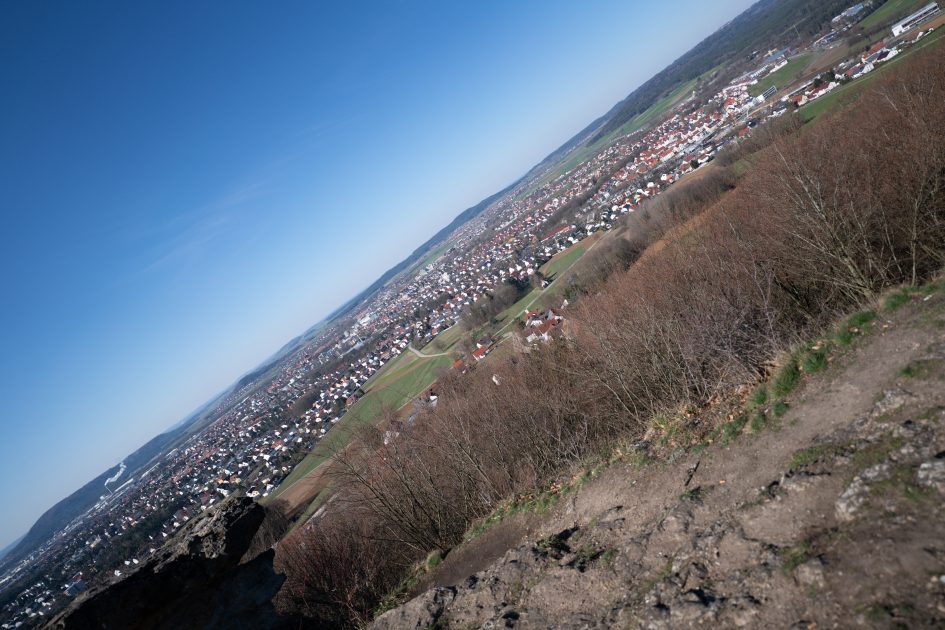
Above: Sony FE 20mm f1.8 G at f1.8; click image for 4k version, large original available at f1.8, f2.0, f2.8, f4.0, f5.6, f8.0, f11
Above: Sony FE 20mm f1.8 G at f1.8

Above: Sony FE 24mm f1.4 GM at f1.7; click image for 4k version, large original available at f1.4, f1.6, f1.7, f2.0, f2.8, f4.0, f5.6, f8.0, f11

Above: Sigma 20mm f1.4 Art on a 36MP Nikon D810 at f1.8; click image for 4k version, large original available at f1.4, f1.8, f2.0, f2.8, f4.0, f5.6, f8.0, f11
In the center both Sonys produce the same very sharp results while the Sigma looks a tad softer. Towards the corners the new FE 20mm f1.8 G pulls ahead of its 24mm GM sibling while the Sigma Art is obviously the softest of the three.

Above: Sony FE 20mm f1.8 G at f2.0

Above: Sony FE 20mm f1.8 G at f2.8
Above: Tamron 20mm f2.8 M1:2 at f2.8; click image for 4k version, large original available at f2.8, f4.0, f5.6, f8.0, f11
At f2.8 the Sony FE 20mm f1.8 G is clearly sharper outside the center than the Tamron.
This is how the new Sony develops when stopped further down:

Above: Sony FE 20mm f1.8 G at f4.0

Above: Sony FE 20mm f1.8 G at f5.6

Above: Sony FE 20mm f1.8 G at f8.0

Above: Sony FE 20mm f1.8 G at f11
The Sony FE 20mm f1.8 G renders a very sharp image already at f1.8 with only slight softening toward the corners. Stop the lens down to f2.8 and it’s almost perfect.
Vignetting and distortions
To make it easier to see light fall-off in the corners of a full-frame sensor I’ve arranged a series of three shots with the Sony FE 20mm f1.8 G at different apertures. All images were developed to the same brightness in the center and no Adobe lens profile applied in the first row of images. The second row was treated with +50 Vignette Control from Lightroom which lifts the extreme corners by about 1 EV at f1.8:
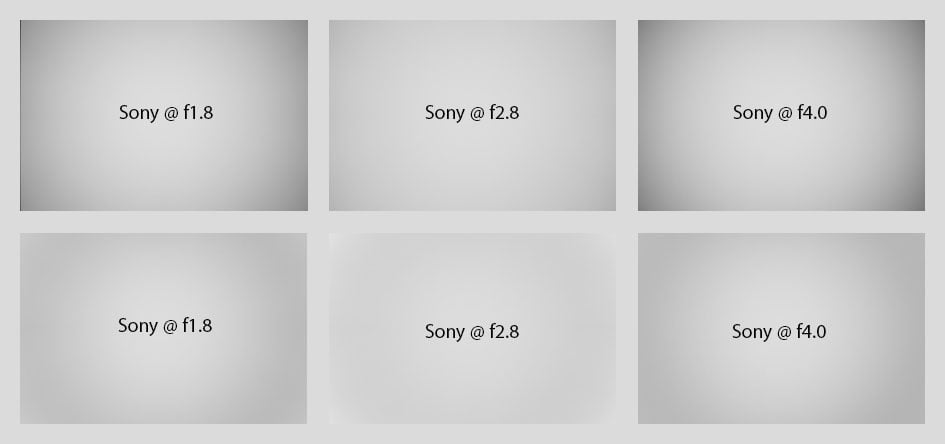
Above: Sony FE 20mm f1.8 G at f1.8, f2.8, f4.0
The strange thing is that although stopping down to f2.8 reduces vignetting considerably over f1.8 (as expected) stopping further down to f4.0 introduces an even heavier vignette than at f1.8. This also shows in JPGs straight out of camera.
Regarding distortions: The new Sony FE 20mm f1.8 G shows a slight mustachio effect which is not corrected in Adobe’s RAW converter as you can see below (top half). JPGs straight out of camera look pretty well corrected (bottom half):
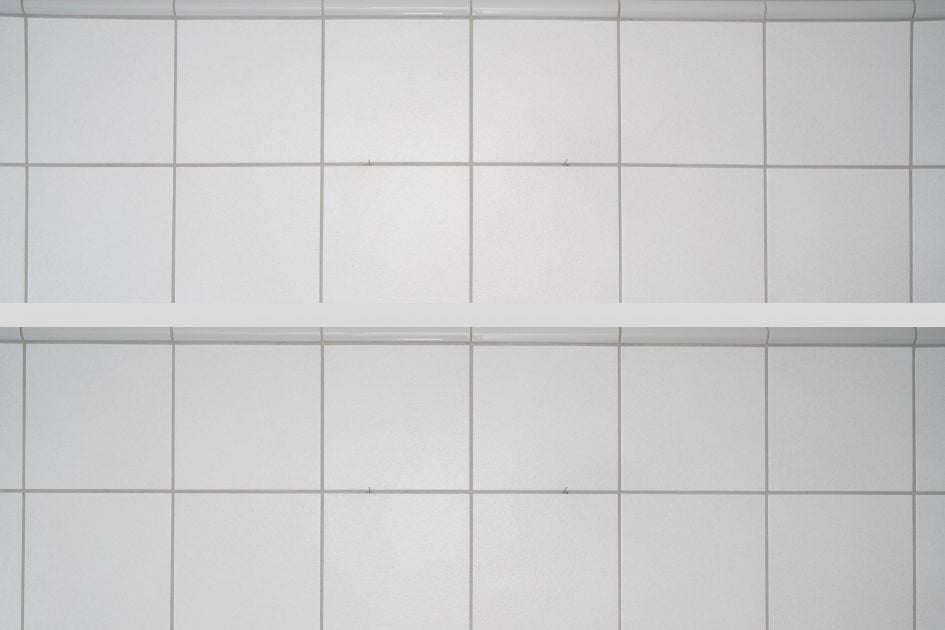
Above: Distortions of Sony FE 20mm f1.8 G, Auto Distortion Control Off/On
Rendering of point-light sources at night-shots
Night-shots pose a different challenge for lenses as the contrast is even higher than under bright sun and point-light sources can reveal some weaknesses such as coma, haloing and colour-aberrations that do not show up as prominently in other test-shots. The 100% crops below the main image show the effect of coma in the FF-corner at various apertures:
Above: Sony FE 20mm f1.8 G at f1.8; click image for 4k version, large original available at f1.8, f2.0, f2.8, f4.0, f5.6, f8.0

Above: Sony FE 20mm f1.8 G; 100% crops from the FF-corner at f1.8 (left), f2.8 (middle), f4.0 (right)

Above: Tamron 20mm f2.8 M1:2; 100% crops from the FF-corner at f2.8 left, f4.0 (middle), f5.6 (right)
The Sony FE 20mm f1.8 G produces only little coma wide open which is practically gone at f2.8. The Tamron 20mm f2.8 M1:2 shows heavier coma.
Rendering of out-of-focus point-light sources
This test is for the rendering of point-light sources in an out-of-focus background. The circle of confusion that is produced by this test is pretty indicative of Bokeh performance (in the background) and light fall-off. Ideally the out-of-focus image of the point-light is evenly lit and perfectly circular, with no “onion-rings”, and without coloration. Large aperture lenses normally produce an effect known as “cat’s eye” the further away from the optical axis the point-light is projected. This is due to optical vignetting in the lens barrel when light enters the lens from an angle.
The 46% crops below the main image show the Bokeh balls at the center, APS-C-corner, and FF-corner at the largest aperture from the Sony and the Tamron:
Above: Sony FE 20mm f1.8 G at f1.8; click image for 4k version, large original available at f1.8, f2.0, f2.8, f4.0, f5.6, f8.0

Above: Sony FE 20mm f1.8 G at f1.8; 46% crops from center, APS-C-corner, FF-corner

Above: Tamron 20mm f2.8 M1:2 at f2.8; 46% crops from center, APS-C-corner, FF-corner; large original available at f2.8, f4.0, f5.6, f8.0
When shot wide open the Sony FE 20mm f1.8 G shows almost no cat’s eye effect toward the FF-corner. Onion rings inside the Bokeh balls are pretty mild but outlining becomes relatively strong outside the center. Still the Bokeh balls of the Sony look much better than from the Tamron which suffers in this comparison from its smaller focal ratio, stronger onion rings and more pronounced outlining.
Let’s see how this analysis of out-of-focus point-light sources translates into Bokeh-performance shooting a book-shelf compared to the Tamron:
Above: Sony FE 20mm f1.8 G at f1.8; click image for 4k version, large original available at f1.8, f2.0, f2.8, f4.0, f5.6, f8.0
Above: Sony FE 20mm f1.8 G at f1.8; 46% crops from foreground, middle-ground, background
Above: Tamron 20mm f2.8 M1:2 at f2.8; 46% crops from foreground, middle-ground, background; large original available at f2.8, f4.0, f5.6, f8.0
Again the Sony FE 20mm f1.8 G pulls ahead of the Tamron due to its f1.8 focal ratio: It renders the out-of-focus areas softer with a smooth transition in the middle-ground. Still there is some nervousness in the off-center background of the Sony.
If you want smoother Bokeh the Sony FE 24mm f1.4 GM is clearly the better choice. With its larger focal ratio of f1.4 and the 20% longer focal length it has an entrance pupil that is roughly twice as wide as from the a 20mm f1.8 lens. And that shows:

Above: Sony FE 24mm f1.4 GM at f1.4; 46% crops from foreground, middle-ground, background; large original available at f1.4, f1.7, f2.0, f2.8, f4.0, f5.6
The Sigma 20mm f1.4 Art has less smooth Bokeh than the Sony FE 24mm f1.4 GM:

Above: Sigma 20mm f1.4 Art on a Nikon D810 at f1.4; 50% crops from foreground, middle-ground, background; large original available at f1.4, f2.0, f2.8, f4.0, f5.6
But remember: To produce this amount of blur you need to be very close to your subject. At normal shooting distances for landscapes or architecture depth-of-field for any 20mm lens is so deep you hardly get any relevant Bokeh effect.
Close-up performance
The Sony FE 20mm f1.8 G goes down to 1:3.8 magnification with manual focusing. Its performance is very usable already at f1.8 and becomes very good once you stop down to f4.0. The following image was shot at 1:4.2 magnification where the area of sharp focus is just 101 x 151mm. The crops shown below are from 0mm, 12mm, and 18mm off the center of the sensor respectively:

Above: Sony FE 20mm f1.8 G at f1.8, 1:4.2 magnification; 100% crops

Above: Sony FE 20mm f1.8 G at f4.0, 1:4.2 magnification; 100% crops

Above: Sony FE 20mm f1.8 G at f8.0, 1:4.2 magnification; 100% crops
This is a very good result marred only a little by field curvature. And it’s much sharper outside the center than the Tamron 20mm f2.8 M1:2 – although the Tamron can go down to a magnification of 1:2.

Above: Tamron 20mm f2.8 M1:2 at f4.0, 1:4.1 magnification; 100% crops
Flare, ghosting, and sun-stars
Catching a strong light-source shining directly into the lens is always a risky business: it could produce strange colourful ghost-images or reduce contrast considerably through flare and glare. The appearance of flare and ghosting depends on factors like the aperture and the angle of the light hitting the lens. So to judge the proclivity of the new Sony FE 20mm f1.8 G for these artefacts I went through a series of well calculated shots against a strong light source to provoke glare and ghosting. The lens hood was mounted in all shots. See two examples at f11 where these effects normally show up most prominently. The little bright square inset in the upper left shows the respective area with an exposure compensation of +3 EV to make it easier to see which levels of black the lens renders at that point:
Above: Flare and ghosting. Strong light hitting the Sony FE 20mm f1.8 G at f11; click image for 4k version or here for +3 EV exposure compensation
Above: Flare and ghosting. Strong light hitting the Sony FE 20mm f1.8 G at f11; click image for 4k version or here for +3 EV exposure compensation
The Sony FE 20mm f1.8 G is very clear of flare and ghosting artefacts. And outside these artefacts the new lens renders a very deep black, so there’s little veiling glare. The lens also does produce only a very moderate flare when the light-source is just outside the corner.
All-in-all the Sony FE 20mm f1.8 G let’s you shoot confidently under adverse contra-light situations. To produce nice sunstars the Sony FE 20mm f1.8 G needs to be stopped down to f8.0.
Next check out my sample images!
Check prices on the Sony FE 20mm f1.8 G at B&H, Adorama, or Wex. Alternatively get yourself a copy of my In Camera book or treat me to a coffee! Thanks!


